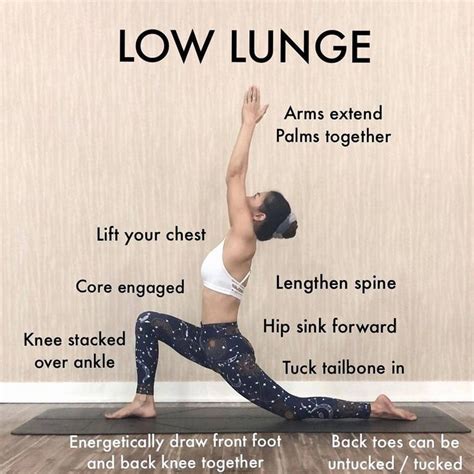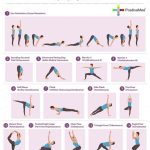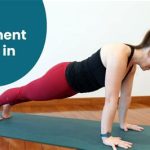Mastering Yoga Alignment: Essential Tips for Safe and Effective Practice
Yoga is more than just flexibility; it’s about precision, control, and alignment. Practicing proper alignment in yoga ensures that the body moves in harmony with the breath and mind, reducing the risk of injury and increasing the effectiveness of poses. Whether you’re a beginner or an advanced yogi, understanding the importance of alignment can transform your practice. In this article, we will delve into the key concepts of yoga alignment, explore its historical context, analyze the current state of yoga practice, and provide practical applications with real-life case studies to optimize your practice.
Key Concepts of Yoga Alignment
Yoga alignment refers to the way in which various parts of the body are positioned in different poses to maximize their benefits and prevent injuries. Understanding these key principles can make a significant difference:
- Joint Stacking: Aligning joints (e.g., knees over ankles, shoulders over wrists) to distribute weight evenly and protect from strain.
- Neutral Spine: Maintaining the natural curve of the spine to support balance and protect the lower back.
- Engagement of Core Muscles: Activating the core for stability and strength in various poses.
- Breath Integration: Synchronizing breath with movement for deeper connection and focus in poses.
- Proprioception: The awareness of the body in space, aiding balance and alignment without external feedback.
Historical Context of Yoga Alignment
Yoga has evolved over thousands of years, with roots tracing back to ancient India. Traditional yoga practices emphasized meditation, breath control, and self-realization. However, physical alignment as a concept only gained prominence in the 20th century, with the rise of Hatha Yoga and its more physical forms such as Iyengar Yoga and Ashtanga Yoga.
B.K.S. Iyengar, a pioneer in modern yoga, revolutionized alignment by introducing props like blocks and straps, which allowed practitioners to maintain correct posture regardless of their flexibility. His meticulous focus on alignment brought attention to the biomechanics of yoga, enabling safer and more therapeutic practices.
| Yoga Style | Alignment Focus | Key Teachers |
|---|---|---|
| Iyengar Yoga | Precision, posture adjustments, use of props | B.K.S. Iyengar |
| Ashtanga Yoga | Flow and alignment with breath | K. Pattabhi Jois |
| Vinyasa Yoga | Breath-synchronized movement | Modern fusion of various teachers |
Current State Analysis: Alignment in Modern Yoga Practice
In the modern yoga world, there is a growing recognition of the importance of alignment. Yoga teachers and schools are increasingly emphasizing body mechanics to avoid injury, particularly as the practice becomes more widespread across varying levels of experience. However, there is still debate over how rigidly alignment should be enforced in classes. Some argue that strict alignment principles can be restrictive, while others believe they are essential for a safe practice.
Another trend is the use of technology to assist in alignment correction. Apps and virtual classes now offer real-time feedback using AI and sensors to track a practitioner’s alignment. Yet, this raises concerns about the accuracy of these systems and their potential to replace hands-on adjustments from experienced teachers.
Practical Applications of Yoga Alignment
Proper alignment in yoga is critical for a safe and sustainable practice. Below are some practical tips for achieving optimal alignment in common poses:
- Mountain Pose (Tadasana): Stand with feet hip-width apart, distribute weight evenly across both feet, and engage the thighs while lifting through the crown of the head.
- Downward Dog (Adho Mukha Svanasana): Press through the hands, lift the hips toward the ceiling, and maintain a slight bend in the knees to lengthen the spine.
- Warrior II (Virabhadrasana II): Ensure that the front knee is directly above the ankle, and the back foot is grounded with the outer edge firmly on the mat.
- Tree Pose (Vrksasana): Press the standing foot into the mat, engage the core, and avoid collapsing into the hips by maintaining even weight distribution.
Case Studies: Alignment Challenges in Different Body Types
Alignment in yoga is not a one-size-fits-all concept. Practitioners come in various body types, and poses may need to be modified accordingly. Below are some case studies that illustrate how alignment differs across individuals:
| Body Type | Alignment Challenges | Solutions |
|---|---|---|
| Tall Practitioners | Difficulty balancing in standing poses | Focus on grounding through the feet and core engagement |
| Short Practitioners | Strain in reaching full extension | Use props to modify poses and avoid overextension |
| Flexible Practitioners | Overextending joints, risking hypermobility | Engage muscles around joints to maintain stability |
| Inflexible Practitioners | Difficulty achieving full range of motion | Use modifications and props to support proper alignment |
Stakeholder Analysis
In the context of yoga alignment, the main stakeholders include yoga practitioners, teachers, schools, and even healthcare professionals. Each group has a unique perspective on alignment:
- Practitioners: Focus on personal safety and improving their practice through alignment.
- Yoga Teachers: Responsible for guiding students and ensuring their safety while maintaining a balance between individual flexibility and alignment principles.
- Yoga Schools: Set standards for teacher training and often emphasize the importance of alignment in certification programs.
- Healthcare Professionals: Use yoga therapy for rehabilitation, where alignment is critical for therapeutic benefits.
Implementation Guidelines for Optimal Yoga Alignment
To ensure optimal alignment, yoga teachers and practitioners can follow these guidelines:
- Education: Teachers should continually educate themselves on body mechanics and alignment principles, attending workshops or specialized training.
- Personalization: Alignment should be adapted to individual body types, injuries, and abilities, rather than enforced rigidly.
- Use of Props: Props such as blocks, straps, and bolsters should be introduced early to support proper alignment, especially for beginners.
- Ongoing Assessment: Practitioners should regularly assess their alignment with the help of mirrors, videos, or teacher feedback.
Ethical Considerations in Teaching Yoga Alignment
Ethics play a significant role in teaching yoga alignment. Instructors must avoid imposing a one-size-fits-all approach, recognizing the diversity of bodies and their unique needs. Moreover, hands-on adjustments should be performed with explicit consent to respect students’ personal space and comfort.
Limitations and Future Research
While alignment is crucial in yoga, its rigid enforcement may hinder the fluidity and personal expression of some practitioners. Future research should investigate the long-term effects of strict alignment principles on different body types and explore how technology might enhance or diminish the benefits of proper alignment.
Expert Commentary
Experts agree that while alignment is vital for safety and effectiveness in yoga practice, it is not an absolute concept. A balance must be struck between honoring traditional alignment principles and adapting to the needs of individual practitioners. As yoga continues to evolve, the discussion around alignment will likely broaden, incorporating new technologies, body awareness practices, and therapeutic applications. In the end, the goal is a practice that is both safe and empowering, allowing each practitioner to deepen their connection with mind and body.








